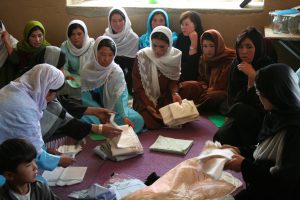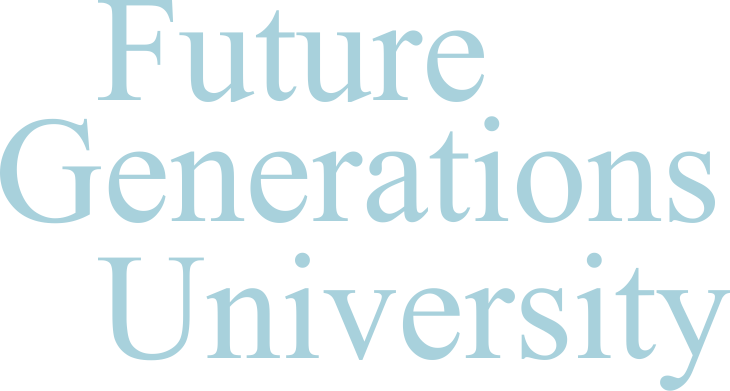Summary of Just and Lasting Change- Chapter 13, by Associate Professor, Noam Schimmel
**Photos from various Future Generations activities in Afghanistan

Behavioral change to advance health is often one of the most difficult aspects of the pursuit of development.
Because of often limited literacy and minimal public education, weak government public health provision and lack of healthcare infrastructure, and cultural differences that may undermine the accessibility of healthcare knowledge and skills and cut off entire sectors of the population – such as women – from accessing it, it can be very hard to achieve substantive behavioral change that is sustainable and necessary for improving health outcomes.
Despite this difficulty, it can and does happen and is achievable.
One example of the SEED-SCALE method of community development in Afghanistan illustrates how behavioral change can follow from an inclusive and holistic model of development that uses the personal narratives of women shared in a safe, communal setting limited to women, to provide them with the knowledge and skills they need to improve maternal and neo-natal health as well as overall health for the entire community.
It enables them to share their experiences of health and ill-health, to support one another, and to plan and carry out health improvements and behavior changes that require limited financial resources and can be implemented with relatively little outside intervention, but which yield dramatically positive and transformative health outcomes.

Shukria Hassan, an Afghani woman who has worked in community development in Afghanistan, describes how she discussed with women in a local Afghani village their life experiences – especially as they relate to health and well-being – and how through this discussion and her listening to them she was able to share fundamental health knowledge which would enable them to adjust their behaviors to promote health.
“As more women shared their stories, they also shared information with each other from the process I was using: two women at a time told their histories, and the evidence from them was then explained with science. Through the five days of the workshop, with every waking hour, we increasingly worked together to explain female reproductive organs and their function, as well as all the other bodily systems and their functions, emphasizing the actions that each woman could take with the resources at hand.” (200)
Hassan further explains,
“I explained that more than half of all health, in whatever community a person lives in, grows from health-care actions families can make, if they want to…. Almost all major health conditions got covered: those affecting men, women, and children. In reproductive health, the women learned about the importance of nursing the baby immediately; the benefit of the baby’s sucking, which constricts the uterus and controls the bleeding… They learned about infections and what can be done about them, about trauma care, and even about domestic violence.” (200)

One simple but powerful and health promoting action that Hassan explained to the women was how to respond effectively to diarrhea.
Many children were dying as babies due to diarrhea and Hassan learned from the women that the way they were responding to diarrhea was to stop nursing and give neither food nor drink to the sick baby. Hassan explained the importance of keeping a baby hydrated when suffering from diarrhea. She showed them how to combine wheat and salt to maintain hydration for babies. The women were able to adopt this behavior and diarrhea rates in the community dropped significantly and child health and rates of infant survival improved.
She went on to explain to the women that because they shared a spring for their water consumption with their animals it was possible that diarrhea resulted from the animals using that same spring. This gave them the information they needed to understand that for the sake of their health and their children’s health they needed to find alternative drinking sources animals could not reach.
These interventions Hassan made were not financially costly nor did they require substantial physical infrastructure or complex human resources.
They centered upon listening and sharing; providing information and basic skills, making them easily understandable, and illustrating how they could be implemented individually and communally, so as to reinforce and expand their positive consequences and scale them up.
The women were able to disseminate what they learned about science-based sound health practices from Hassan with their children, husbands, and to normalize as family and communal practice.
Knowledge was shared, spread, and sustained in this way and led to informed behavior that changed to accommodate new knowledge and skills and advance health.

When Besmillah Sakhizada returned ten years after Hassan’s visit he found that the community had internalized and applied the health practices she had transmitted to them.
Water was now available from a spring animals could not reach. Hygiene had improved, including washing hands with soap after touching animals and after defecation. Diet had improved because of lessons they had learned about growing more diverse and extensive vegetable gardens from staff affiliated with Future Generations engaging in SEED-SCALE development.
In these ways multi-faceted behavior change improved health outcomes sustainably and substantially.
Many health development efforts that involve large sums of money to cover the costs of extensive physical infrastructure and highly trained doctors and nurses do not achieve the same success precisely because they do not work in partnership with the community in a participatory way that encourages and enables behavior change and enables the transmission and application of new knowledge.

These behavior changes did not require a trip to the doctor or to a hospital; they were basic enough to be done at home or in the community, with the existing resources, and with little outside resources and support beyond the initial engagement of Hassan with the women in the community.
The women were able to make the knowledge and skills gained their own, and to integrate it into their family and communal life. Both when it was presented and when they integrated it into their own practices it felt and indeed became not something external, but something over which they had understanding, over which they exercised choice and control, and which reflected their values and wishes for better health outcomes.
In time, communities that have practiced behavior change for improved health outcomes are able to share their knowledge, skills, and practices with nearby communities, creating a positive ripple effect of communal change.




